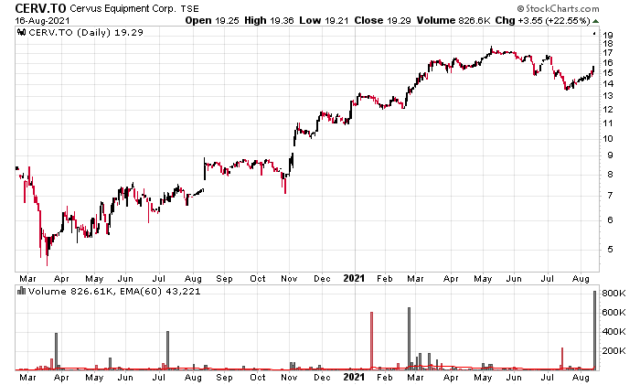Market pricing for metallurgical coal is going nuts in China – right now it is north of US$400/ton cfr (and given how gong-showed marine transportation logistics are these days, freight is not a trivial expense). However, the point is that even with freight these are very, very, very high prices. This has impact on prices that Teck will receive on their met coal production (a good chunk of their met coal production goes over the Pacific). In addition, my briefing note and financial forecast I wrote on Arch Resources in June (cash generation of $15-20/share) is looking increasingly conservative.
In the current commodity price environment, both Teck and Arch will be cash machines. While both companies aren’t going to make US$400/ton on all of their sales (the North American market is much less pricier), the overall impact on pricing across the geographical spectrum is clearly up from where it was 18 months ago.
Teck will also have the supplement of its 70% owned QB2 project when it is completed in 2022. QB2, at US$4.00/pound of copper, will generate about US$1.7 billion EBITDA on a 100% basis and after baking in 40% taxes, Teck should be able to generate an incremental US$700 million/year in cash out of this project. Every 50 cents of copper above this will be about US$125 million more. On a consolidated company basis, it is foreseeable they will be able to pull in about $3 billion a year in cash. Once the capex on QB2 is finished (which is the primary cash drain for Teck at the moment), they will be able to begin a simultaneous debt paydown and dividend increase at the same time – my guess is they will ramp up their existing $0.05/quarter dividend to around $0.25/quarter once QB2 is finished and dump the rest into debt repayment. My guess is they’ll want to get below at least $5 billion net debt.
Arch’s net debt probably peaked out at Q2-2021 and at this point forward, it will be generating significant sums of cash. When examining coking coal statistics, the Leer South mine (pretty much finished) will be positioned to grabbing the lion’s share of this market. It takes years to get a coal project out of the ground and mal-investment has finally taken its course. In 2022 they will likely be able to pay off their net debt and then re-institute a dividend or share buyback (offsetting their near-disastrous capital allocation decisions of previous years post-Chapter 11).
The virtual investment prohibition (fueled by ESG and other environmentalism) has created an environment of impossible-to-get capital for coal projects – a perfect formula for elevated prices for those that have incumbency rights. Both Teck and Arch fit the bill for metallurgical coal in North America.
The question is when the party will end. As long as worldwide demand for steel remains red-hot, not anytime soon.

